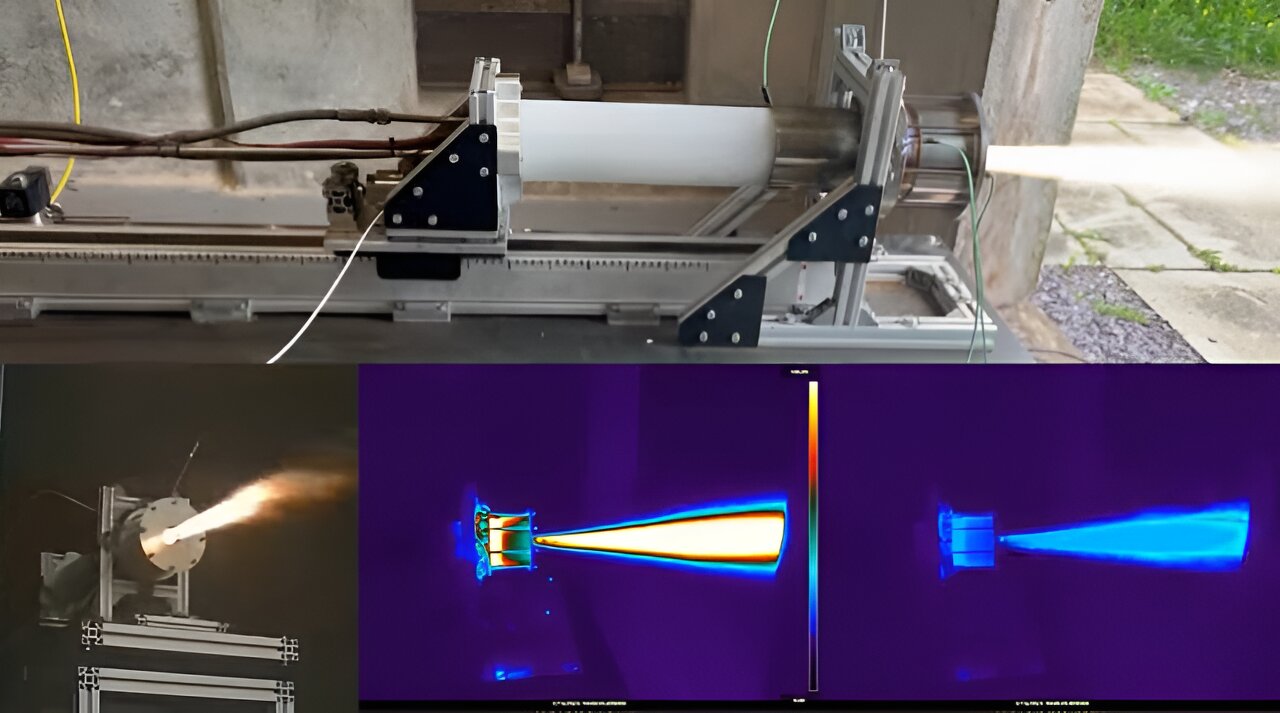In a major breakthrough, British researchers from the University of Glasgow have successfully conducted tests on a groundbreaking self-eating rocket prototype, named Ouroborous-3. This innovative rocket design has the potential to significantly reduce the costs associated with launching small satellites, while also addressing concerns related to orbital debris.

Photo from Google
A Mythical Inspiration for Rocket Innovation
The Ouroborous-3 rocket, developed by a team of researchers led by Professor Patrick Harkness, draws inspiration from the ancient mythical creature that consumes its own tail. This revolutionary rocket engine operates by gradually burning up like a candle, ultimately collapsing when its fuel, a combination of gaseous oxygen and liquid propane, is depleted.
The uniqueness of the Ouroborous-3 lies in its ability to consume its own structural mass during the burning process. As it heats up and melts the plastic supporting structure, the rocket gains an additional 5 to 16 percent of fuel. This novel approach not only makes the rocket lighter upon launch but also allows for more space for payloads, potentially reshaping the future of rocket design and satellite deployment.
Professor Patrick Harkness emphasized the transformative impact of this technology, stating that burning a similar amount of structural mass as propellant could revolutionize the design and efficiency of future rockets, ushering in a new era in space exploration.
READ ALSO: NASA Delays Artemis Mission, Astronauts’ Lunar Walk Won’t Happen Until 2026
Reducing Debris and Opening Doors for Smaller Satellites
Beyond cost reduction, the Ouroborous-3 addresses a critical issue associated with traditional rocket designs – the production of orbital debris. Conventional rockets, with separate stages for fuel, often contribute to space debris when these stages are disposed of. The self-eating rocket’s innovative approach minimizes debris production, presenting a cleaner and more sustainable solution for space exploration.
The successful testing of the Ouroborous-3 at the Machrihanish Airbase in Scotland, where it surpassed expectations by producing 100 newtons of thrust, marks a significant milestone. The team, buoyed by a £290,000 ($368,089) grant from the UK Space Agency and the U.K. Science and Technology Facilities Council, is already working on a more powerful successor, signaling the potential for a paradigm shift in satellite launch technology. The Ouroborous-3’s ability to accommodate smaller satellites independently may reduce their dependence on larger missions for deployment, further diversifying and democratizing access to space.
READ ALSO: Peregrine Moon Lander Carries NASA Experiments On Pioneering Voyage

















































